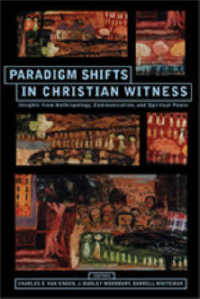- ホーム
- > 洋書
- > 英文書
- > Health / Fitness
Full Description
Taiji Qigong is a gentle, easy-to-learn system of energy-enhancing exercises that coordinate movement with mindful breathing and inner awareness, which, when practiced regularly, will give you more energy, improve health, and help prevent illness.
This book is designed to inform all levels and depths of practice. Regardless of whether you are completely new to the subject or are looking to enrich your current understanding, you will find a treasure trove of information from which to build a practice specific to your own goals, such as improving flexibility, cultivating mindfulness, or getting a better night's sleep.
Part I provides a thorough grounding in the theory and practice of Qi and Qigong. Part II discusses the general principles of Qigong practice, clarifying common questions about how to practice (15 minutes a day is a good starting point; 30 minutes will provide a marked increase in vitality and serenity), how to achieve an optimum stance, and what breathing techniques should be used (natural breathing, abdominal breathing, and reverse abdominal breathing). Part III examines the 18 movements of Taiji Qigong with step-by-step illustrated instructions, detailed information on the benefits of each stance, additional technique tips, and insights into how movement flow can be enhanced through the power of the mind. At the back of the book is a handy reference chart for quick practice reminders. Practice the full 18 movements or simply pick and choose the ones you like best!
Contents
Part I. The Theory of Qi and Qigong
What Is Qi?
The Three Treasures
More About Jing (Essence)
Original Qi
The Gate of Vitality
More About Shen (Mind)
Enriching and Utilizing the Three Treasures Through Qigong
Channels of Qi
Dantian
Energy Points or "Qi Vortices" Along the Qi Channels
Yin and Yang
What Does Qigong Really Mean?
The Small Circulation
Part II. General Principles of Qigong Practice
How Much Should You Practice?
Optimum Conditions for Practice
Correct Posture and Stance to Begin
Refining Your Stance
Breathing Methods
A Note About Mental Focus
A Note About Internal Effects
A Note About Benefits
A Note About Motivation
Possible Side-Effects
The Concept of Distorted Qi
Part III. The 18 Movements of Taiji Qigong
1. Beginning (...Movement)
2. Opening the Chest
3. Painting a Rainbow (sometimes called "Dancing With the Rainbow")
4. Separating the Clouds
5. Arm Rolling (...in Fixed Stance) (sometimes called "Back Swinging Monkey")
6. Rowing a Boat (...in the Middle of a Lake)
7. Lifting the Ball (sometimes called "Holding a Ball in Front of the Shoulders")
8. (Turning to...) Gaze at the Moon
9. (Turning Waist and...) Pushing Palm
10. Hands in Cloud (...in Horse Stance)
11. Scooping the Sea (...and Viewing the Sky)
12. Pushing Waves (sometimes called "Playing With Waves" or "Reinforcing Waves")
13. Flying Dove (...Spreads its Wings)
14. Charging Fists (...With Outstretched Arms)
15. Flying Wild Goose
16. Spinning Wheel
17. Bouncing a Ball (...While Stepping)
18. Calming Qi (sometimes called "Balancing Qi" or "Pressing the Palms for Calming")
Summary of Exercises
Quick Reference Chart








